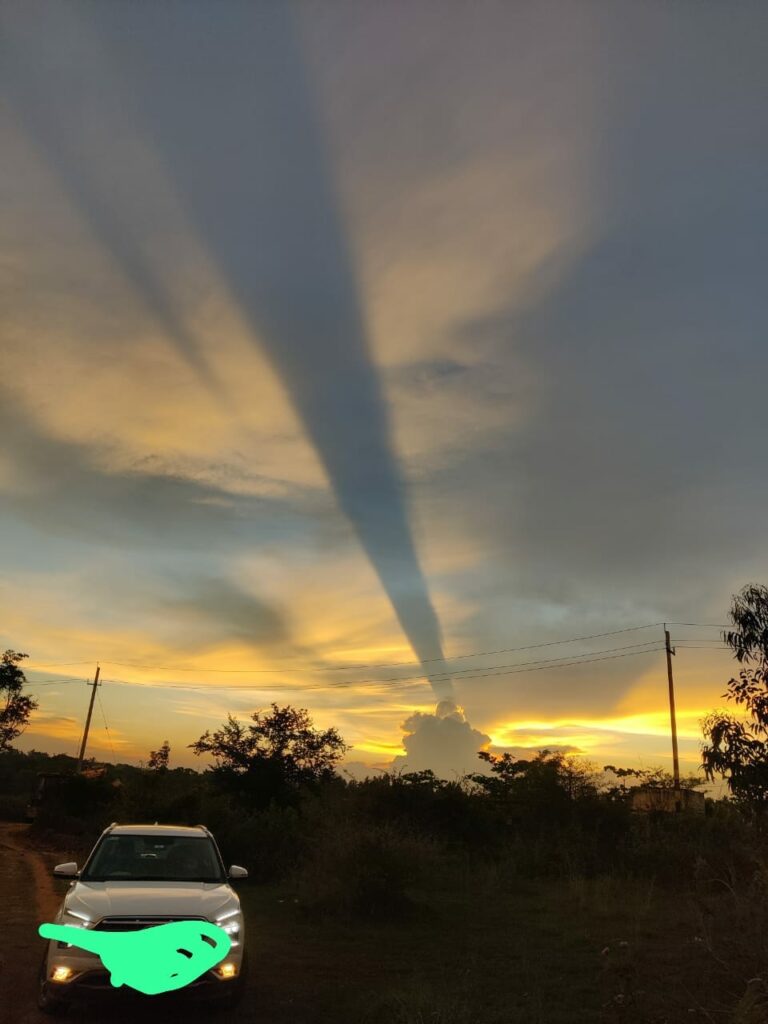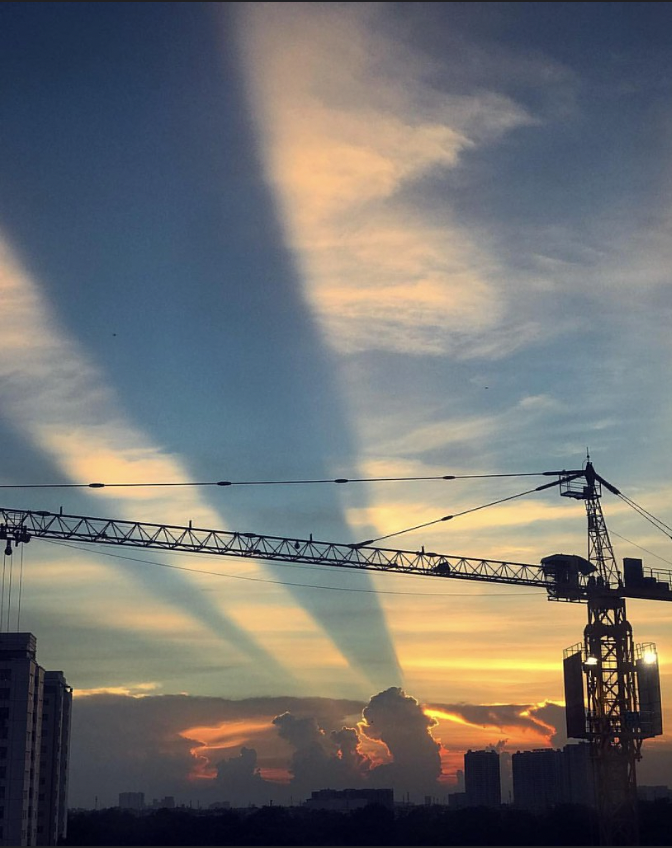Several Facebook users captured this beautiful photo of crepuscular rays at sunset.


What are Crepuscular rays? sometimes called sunrays


CLICK HERE Crepuscular rays, shafts of light which are seen just after the sun has set and which extend over the western sky radiating from the position of the sun below the horizon. They form only when the sun has set behind an irregularly shaped cloud or mountain which lets the rays of the sun pass through a cloud in bands. The radiating appearance of the bands is caused by perspective, as demonstrated by the fact that when on rare occasions the rays extend across the entire sky, they appear to converge again on the eastern horizon. The name is sometimes applied to shafts of sunlight seen when the sun shines through cumulus clouds, but the derivation of the word (from the Latin crepusculum, “twilight”) indicates that it most accurately applied only to the after-sunset occurrence. Crepuscular rays (pronounced /krɪˈpʌskjələr/, also known as LORD Rays), in atmospheric optics, are rays of sunlight that appear to radiate from a single point in the sky. These rays, which stream through gaps in clouds or between other objects, are columns of sunlit air separated by darker cloud-shadowed regions. The name comes from their frequent occurrences during crepuscular hours (those around dawn and dusk), when the contrasts between light and dark are the most obvious. These rays are actually parallel to each other, streaming through gaps in clouds or other objects (such as mountain peaks). They appear to diverge, much like a road that appears narrow in the distance appears wide under your feet. Darker cloud-shaded regions lie between the sunlit columns. Anticrepuscular rays are similar to crepuscular rays, but seen opposite the sun in the sky. Anticrepuscular rays are near-parallel, but appear to converge at the antisolar point because of linear perspective. Addtional Information: Anticrepuscular rays, or antisolar rays, are meteorological optical phenomena similar to crepuscular rays, but appear opposite the Sun in the sky. Anticrepuscular rays are essentially parallel, but appear to converge toward the antisolar point, the vanishing point, due to a visual illusion from linear perspective. Anticrepuscular rays are most frequently visible around sunrise or sunset. This is because the atmospheric light scattering that makes them visible (backscattering) is larger for low angles to the horizon than most other angles. Anticrepuscular rays are dimmer than crepuscular rays because backscattering is less than forward scattering. Anticrepuscular rays can be continuous with crepuscular rays, curving across the whole sky in great circles. Source: Wikipedia, Britannica, Signs of the Times Also Read: 

Anticrepuscular rays are most frequently visible near sunrise or sunset. Crepuscular rays are usually much brighter than anticrepuscular rays. This is because for crepuscular rays, seen on the same side of the sky as the sun, the atmospheric light scattering and making them visible is taking place at small angles.
Although anticrepuscular rays appear to converge onto a point opposite the sun, the convergence is actually an illusion. The rays are in fact (almost) parallel, and the apparent convergence is to the vanishing point at infinity.What are Anticrepuscular rays?

